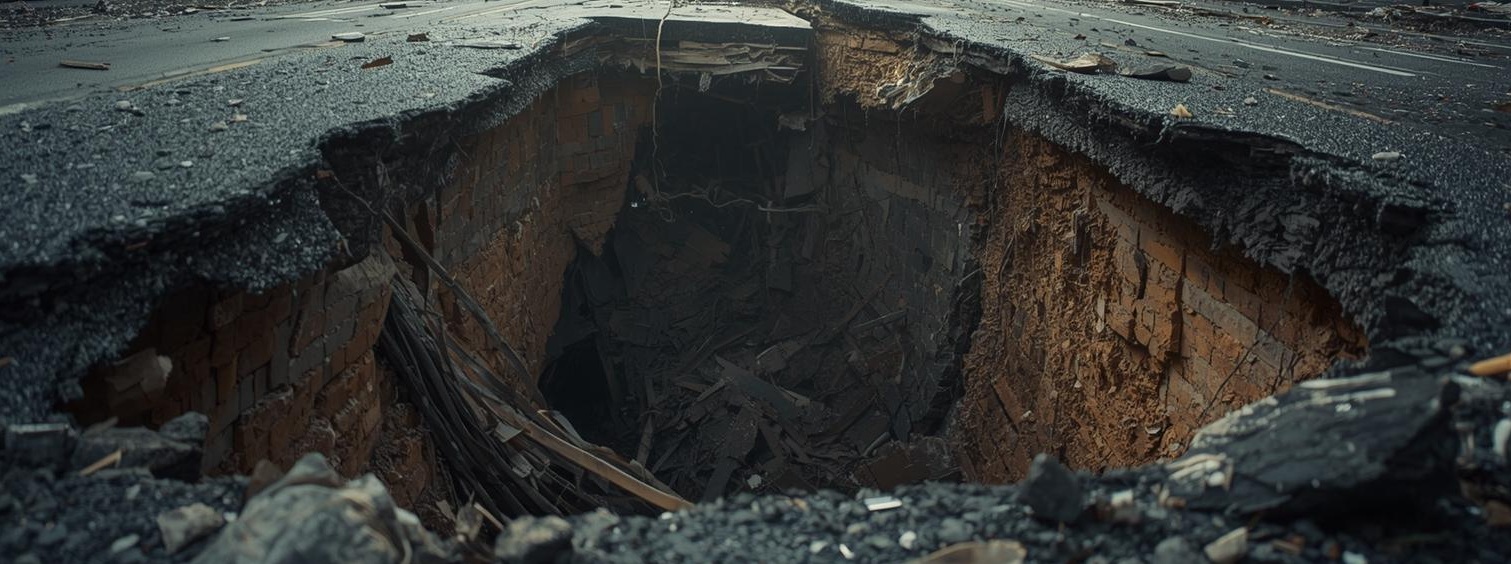
- A massive section of Samsen road subsided in front of Vajira hospital, forming a deep sinkhole on 24th September 2025 morning, caused by a weak structure in the metro tunnel that allowed soil and water to flow through a leak.
- Further reasons are under investigate and no injuries reported. Only the road and pile under the police station were damaged.
- The repair duration could take over a year according to the prime minister’s interview.
What happened ?
On 24th September 2025 at 7:13 AM, Samsen Road subsided and formed a large hole, approximately 30 meters by 30 meters and 50 meters in depth, from in front of Vajira Hospital to Samsen Police Station. It is the location of the Vajira Hospital Mass Rapid Transport (MRT) metro station, which is part of the south purple line extension. Two electric poles and two cars fell into a cavity. Initially, there were no injuries reported.
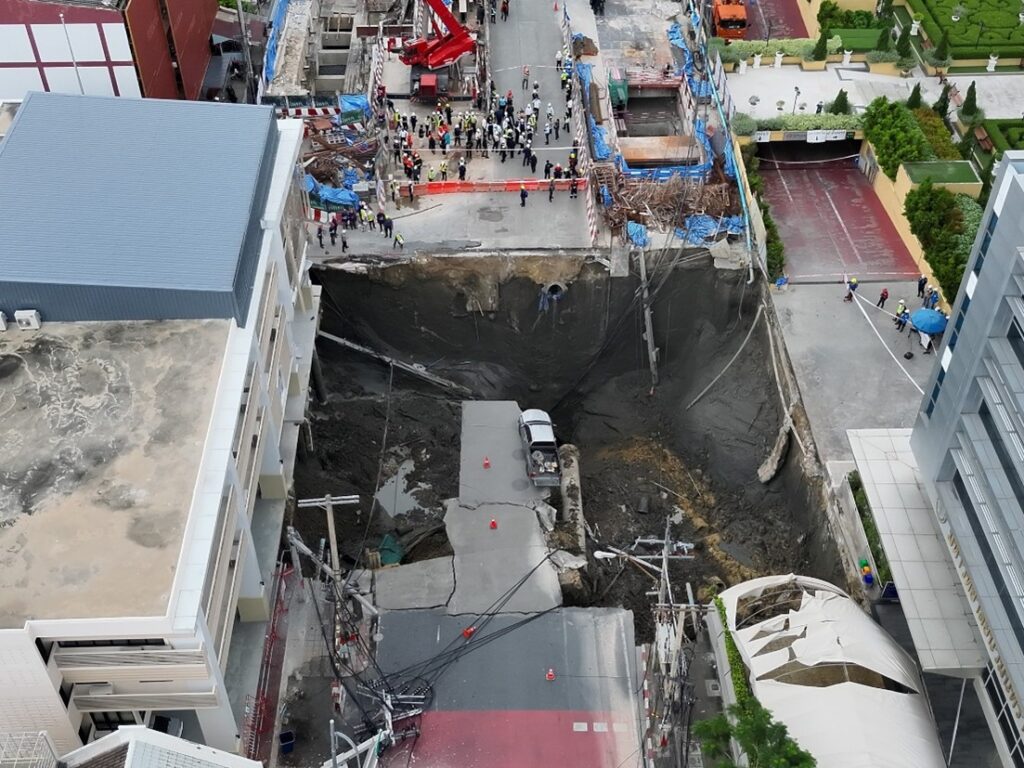
The subsidence is still ongoing. On the same day at 1:05 PM, the road in front of Vajira Hospital continued to collapse, causing the pier and electric pole to fall into a hole. At 1:25 PM, rain in the subsiding area caused a minor collapse of the Dusit police station structure. At 2:42 PM and 3:15 PM, the soil continues to subside by 1 meter and 2 meters, respectively. There is no current cavity size reported.
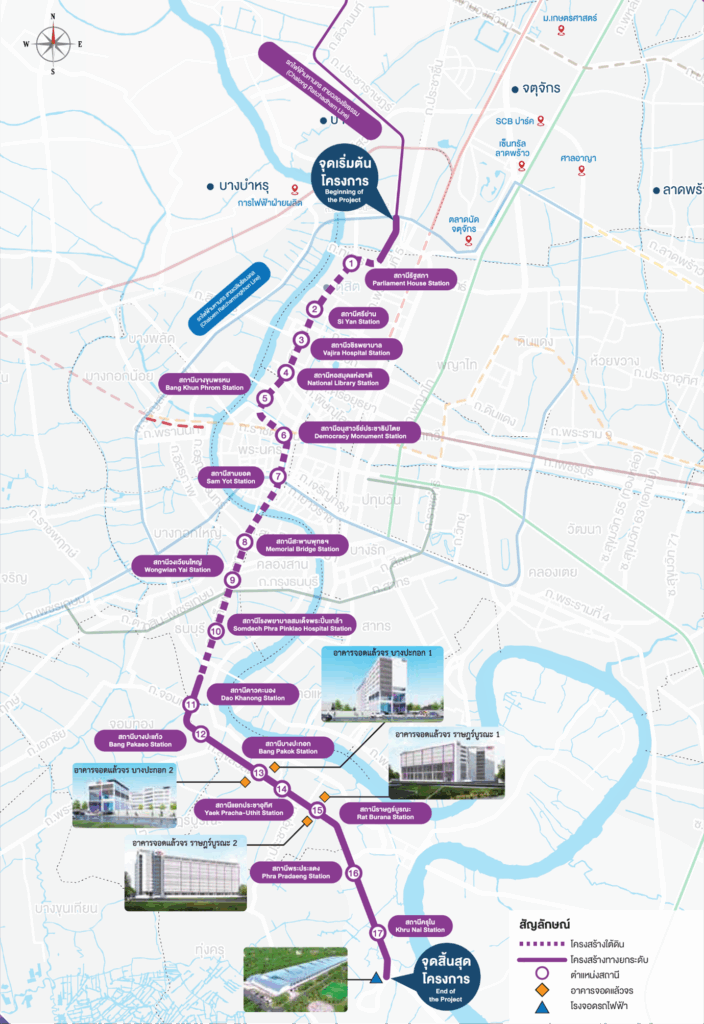
Incident response
Vajira hospital has suspended out-patient department (OPD) and on-site learning in faculty of medicine for 2 days. Dipangkorn Rasmijoti building is temporarily closed. Moreover 3,500 patients were evacuated from the buildings near the subsident areas. The emergency room (ER) in The Bejaratana building is still open, and necessary surgeries are allowed. However, Hospital buildings did not take any damage due to underground foundation wall.
Samsen police station was took the most damaged among all buildings. A few foundation piles have been damaged. The officers have to relocate the police station temporarily.
Dusit district officer announced a traffic closure from Vajira intersection to Sang Hi intersection and surrounding areas to prevent more accidents from road subsidence.
Seven urgent measures to minimize the damage
- Cut off main water from waterworks and still have secondary water lines to residents in the area in case of emergency.
- Cut off the electricity to prevent further accidents.
- Seal the leak point in the tunnel
- Assess the safety of surrounding buildings
- Monitor the soil condition through CCTV cameras
- Inspect the condition of building structures
- Manage the traffic
( Announced by Mr. Chadchart, the governor of Bangkok )

Investigation
After the subsidence, Mr. Chadchart said a massive sinkhole on Samsen Road started from water from waterworks and soil falling into the connection of metro tunnel (15-20 meters in depth) and metro station, which is a weak spot. Some residents saw water seeping from the road before the subsidence. Further root causes are under investigation.
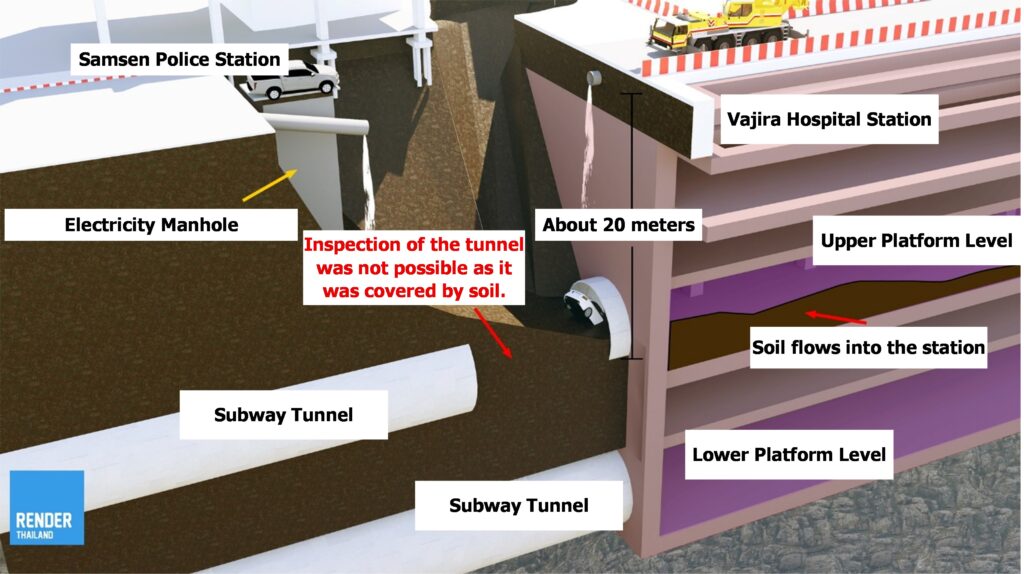
Mr. Anutin, prime minister of Thailand said “Cause cannot be identified yet. There must be a mistake made, but it is all about engineering, we must identify the cause”
The governor is also concerned about rainfall, which could cause more soil and water to enter the tunnel, potentially delaying the road reconstruction. A team is prepared to respond in case of rainfall.
Mr. Kajpajon Udomthamphakdee, the governor of Mass Rapid Transit Authority of Thailand (MRTA) said “Soil heaving and leaking underground water cause the connection between wall of metro station and tunnel movement.”
Mr. Pichit, Director-General of the Department of Mineral Resources, explained the incident in terms of mineral resources. “the geological structure of Bangkok is 20 to 30 meters of clay and river delta. A natural cavity cannot happen without external stimulation such as metro construction and leaking underground pipe. Moreover, rainfall causes the erosion of clay structures and becomes a cavity. Water from rainfall and waterwork also dissolves clay and make it easier to flow through a cavity.” So, the geological structure is also main factor of damage. Type of clay in Bangkok is soft clay and river delta. It has unique properties such as high compressibility, high water percentage, low water drainage, shrinkage, expansive and strength. This clay consists of 24 to 30 percent of water. It is called “Bangkok clay”.
However, no buildings collapsed after the incident. Only some 21 meters-piles under the police station were damaged.
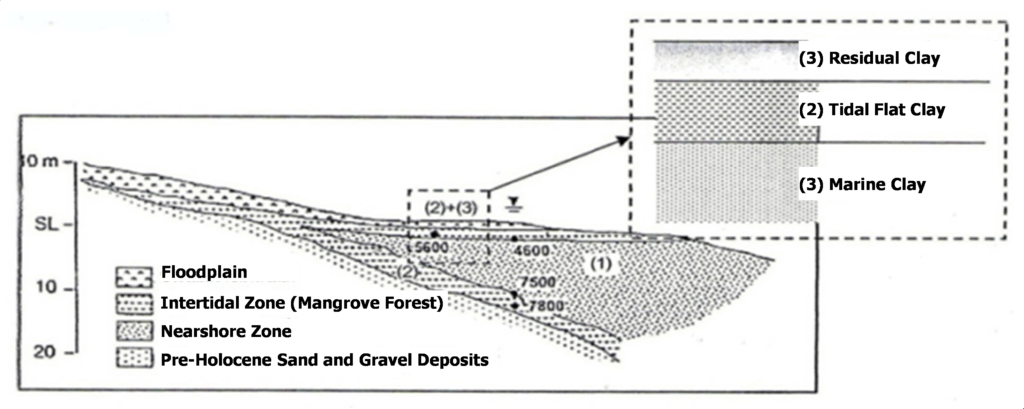
Reconstruction
Mass Rapid Transit Authority of Thailand (MRTA) and their contractor sealed the leak tunnel with over 50,000 sandbags to prevent soil and water from entering the hole. After sealing has finished, filling concrete and beginning the road construction will be conducted. This is a plan from Mass Rapid Transit Authority of Thailand (MRTA). This road will be reconstructed and tested before October 9, 2025.
Possible causes of subsidence across Bangkok
Subsidence could come from several factors in Bangkok. It often leads to structural damage and large cavities like Samsen road and previous events like Udomsuk road, Chaengwattana road and Sukhumvit 46 road. There are three main factors causing the subsidence in Bangkok, including groundwater pumping, weight construction site and physical properties.
- Groundwater pumping causes water pressure reduction in clay layer. Groundwater pumping has been identified as a major contributor to ground collapse in several subsidence incidents. According to the consolidation testing report, the result show that Bangkok clay consolidation occurred from continuous weight pressing, which is consequent to the water pressure reduction in clay and increase the level of stress to critical.
- Weight of construction site is also cause of subsidence. Most incidents are affected by Bangkok clay consolidation as the foundations are in aquifer.
- Physical properties of sedimentary layer are also necessary. Bangkok located on unconsolidated sedimentary layer consisting of clay and sandy soil, which could subsident, especially river delta where is a dry riverbed. Additionally, water destabilizes soil structure by disrupting consolidation between clay layers and pore spaces, which increased moisture causes physical bonds between the soil particles to weaken, which allows the soil structure to collapse. This incident is most relevant to physical properties of sedimentary layer since clay and water break into tunnel.
Mitigation measure
To mitigate the subsidence situation, it needs immediate, assessment and long-term mitigation strategies focus on stabilizing the road, managing leaked water, and securing surrounding infrastructure.

1. Immediate mitigation
Starting with immediate ground stabilization and water management. Leak point needs to be sealed and reinforcement to stop movement of soil and water into the underground. This involves deploying a large volume of sandbag and concrete pouring to seal off the source of water flow and prevent more soil from the leak point, and locating the leak point to immediately stop water flow. Rainfall is also the concerned point making soil flow easily. Sandbags could be used temporarily to prevent rainwater from entering collapsed areas, which could further destabilize the soil. Related officers conducted all mentioned immediate mitigation to stop further damage.
2. Monitoring and assessment
Secondly, Monitoring and assessment should be established all-day for soil movement and ground stability to detect any further subsidence or shifting.Urgently assessing the structural integrity of all surrounding buildings, especially Samsen police station, where foundation piles may have been damaged by the soil. Root cause investigation must be conducted after the immediate mitigation to find the exact sequence of incidents and root causes to prevent recurrence. The officers are investigating the root causes of this incident.
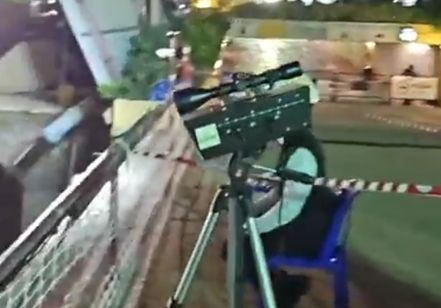
3. Long-term mitigation
Lastly, Long-term prevention and planning is the last part of mitigation. Ground improvement needs employing advanced geotechnical engineering solutions such as deep soil mixing or grouting injections in surrounding soil to increase its strength and stiffness, ensuring long-term stability.
Groundwater management needs to implement strategies to better manage groundwater such as reducing groundwater extraction following the groundwater extraction law to maintain a stable water level.
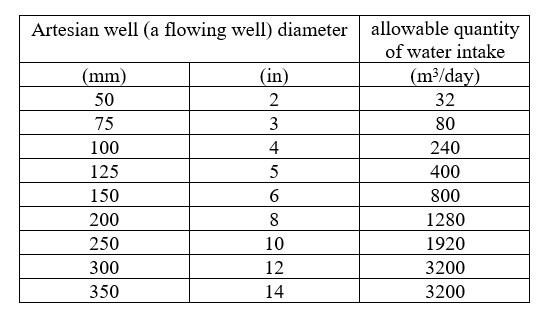
Infrastructure inspection is conduct a full inspection of all underground works and junctions along entire Purple line extension to identify and reinforce other weak points before similar incidents occur.
Reviewing and potentially revising construction protocols and designs for future underground construction in soft soil to incorporate safety margins and preventive measures against soil erosion and leak pipe.
Reference https://www.khaosod.co.th/breaking-news/news_9950342 https://www.bbc.com/thai/articles/cj6x9kek7kro https://www.thaipbs.or.th/news/content/356871 https://www.thairath.co.th/news/local/bangkok/2884791 https://www.bangkokpost.com/thailand/general/3109996/huge-subsidence-on-samsen-rd-in-bangkok https://www.prachachat.net/general/news-1889458 https://www.thaipbs.or.th/now/content/3191 Facebook: Chadchart Sittipunt Facebook: Office of Disaster Prevention and Mitigation Facebook: Render Thailand Regulation of the Department of Groundwater Resources Classification of zone for the management of geology and geological resources of Bangkok |
